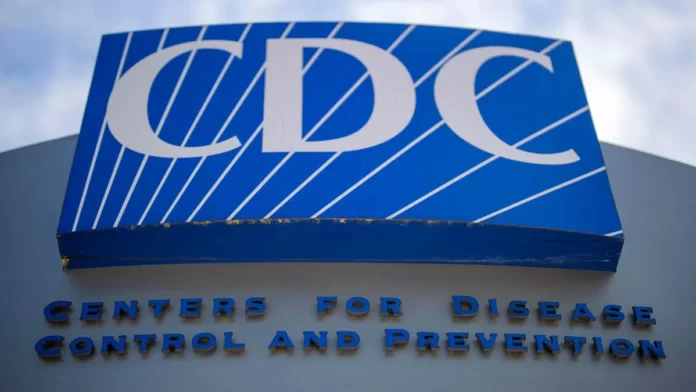The Centers for Disease Control and Prevention (CDC) has announced a significant update to its guidelines regarding the isolation time for COVID-19 patients. The agency’s Director, Dr. Mandy Cohen, stated that this change reflects the progress made in preventing severe outcomes from COVID-19.
“However, we still must use the commonsense solutions we know work to protect ourselves and others from serious illness from respiratory viruses—this includes vaccination, treatment, and staying home when we get sick,” he stated clearly.
The new guidelines reduce the recommended isolation period for COVID-19 patients from 10 days to 5 days, provided certain conditions are met. According to the CDC, individuals who test positive for COVID-19 should isolate for 5 days from the onset of symptoms, or if asymptomatic, from the date of their positive test result.
Furthermore, the CDC advises that individuals may end isolation after 5 days if they are fever-free for at least 24 hours without the use of fever-reducing medications and if their other symptoms have improved. Additionally, individuals are encouraged to continue wearing masks around others for an additional 5 days after ending isolation.
The decision to shorten the isolation period is based on evolving scientific evidence and reflects a better understanding of the transmission dynamics of COVID-19. Dr. Cohen emphasized that while the change in guidelines may come as a relief to some, it is essential to remain vigilant and continue following preventive measures to mitigate the spread of the virus.
The CDC’s updated guidelines have implications for various sectors, including healthcare, workplaces, and schools. Shortening the isolation period may help alleviate staffing shortages in healthcare facilities and reduce disruptions to essential services caused by prolonged absences due to COVID-19.
Employers and school administrators are advised to review and update their policies in light of the new CDC guidelines to ensure the safety and well-being of employees and students. However, it is important to note that individual states and localities may have their own regulations and recommendations regarding COVID-19 isolation and quarantine protocols.
In addition to the changes in isolation guidelines, the CDC continues to emphasize the importance of vaccination and other preventive measures in controlling the spread of COVID-19. Vaccination remains a crucial tool in the fight against the virus, and individuals are encouraged to get vaccinated and receive booster doses as recommended.
Furthermore, individuals who test positive for COVID-19 are advised to seek treatment and follow their healthcare provider’s guidance to prevent complications and reduce the risk of transmission to others. Staying home when sick and practicing good hand hygiene and respiratory etiquette are also essential measures to protect oneself and others from COVID-19.
The updated guidelines from the CDC come amidst a backdrop of ongoing efforts to manage the COVID-19 pandemic, which has posed unprecedented challenges to public health systems and communities worldwide. Since the emergence of the virus, scientific understanding of COVID-19 and its transmission dynamics has continued to evolve, leading to adjustments in public health strategies and guidelines.
The decision to shorten the isolation period for COVID-19 patients reflects a balance between controlling the spread of the virus and minimizing disruptions to daily life and essential services. By reducing the recommended isolation time from 10 days to 5 days, the CDC aims to strike a balance that allows individuals to return to work, school, and other activities sooner while still taking necessary precautions to prevent transmission.
However, it is essential to recognize that the decision to shorten the isolation period is not without controversy. Some public health experts have expressed concerns that reducing the isolation time may increase the risk of transmitting the virus to others, especially in settings where individuals may still be contagious after 5 days. As such, adherence to additional preventive measures, such as wearing masks and practicing good hand hygiene, remains critical in mitigating the spread of COVID-19.
The CDC’s updated guidelines also underscore the importance of vaccination in controlling the spread of COVID-19 and preventing severe outcomes. Vaccination remains the most effective tool in combating the virus, and efforts to expand vaccine access and uptake continue to be a priority for public health authorities.
Furthermore, the CDC’s recommendations for staying home when sick and seeking medical care when necessary are essential components of efforts to prevent the spread of COVID-19. Early detection and treatment of COVID-19 can help reduce the risk of transmission to others and prevent the development of severe illness.
As the pandemic continues to evolve, public health agencies like the CDC will continue to monitor the situation closely and adjust guidelines as needed based on the latest scientific evidence and epidemiological data. While the decision to shorten the isolation period may represent a step forward in the pandemic response, it is crucial for individuals and communities to remain vigilant and continue to follow recommended preventive measures to protect themselves and others from COVID-19.
The CDC’s updated guidelines on isolation for COVID-19 patients reflect ongoing efforts to adapt public health strategies in response to the evolving nature of the pandemic. By balancing the need to control the spread of the virus with minimizing disruptions to daily life, the CDC aims to provide guidance that supports both public health and individual well-being. As the situation continues to unfold, continued collaboration and adherence to recommended preventive measures will be crucial in overcoming the challenges posed by COVID-19.

